Icy hotspots in focus at climate talks?
With western Europe sweltering in a record-breaking heatwave, climate scientists are meeting in Paris this week for what is regarded as the last major climate science conference before the key COP 21 in Paris at the end of this year. “Our Common Future under Climate Change” wants to be “solutions-focused”, but starts off with a resumé of the state of science as a basis.
One of the topics on the wide agenda is, of course, the cryosphere, with scientists reporting on rapid changes in the Arctic ice and permafrost, and worrying developments in the Antarctic.
As conference after conference works to prepare a new World Climate Agreement, to take effect in 2020, the International Cryosphere Climate Initiative (ICCI) is concerned that the INDCSs, or Intended Nationally Determined Contributions, i.e. the climate action countries propose to take are not in line with keeping global warming to the internationally set target of a maximum two degrees centigrade. Scientists tell us this itself would already have major impacts on the world’s ice and snow.
Climate pledges way too low
Pam Pearson, the founder and director of ICCI, told journalists during a recent visit to Bonn her indication of INDCS so far was that they are ”somewhere between 3.8 and 4.2 degrees”.
Pearson and her colleagues are working hard to make the scientific evidence on climate changes in our ice and snow regions accessible and “must-reads” for the politicians and others who are preparing to negotiate the new agreement at the Paris talks at the end of the year, to replace the Kyoto protocol. She was here in Bonn at the last round of UN preparatory climate talks last month, holding a side event and briefing media and negotiators.
Pearson was part of the original Kyoto Protocol negotiating team. She is a former U.S. diplomat with 20 years’ experience of working on global issues, including climate change. She says she resigned in 2006 in protest over changes to U.S. development policies, especially related to environmental and global issues programmes. From 2007-2009, she worked from Sweden with a variety of organizations and Arctic governments to bring attention to the potential benefit of reductions in short-lived climate forcers to the Arctic climate, culminating in Arctic Council ministerial-level action in the Tromsø Declaration of 2009.
Pearson founded ICCI immediately after COP 15 to bring greater attention and policy focus to the “rapid and markedly similar changes occurring to cryosphere regions throughout the globe”, and their importance for the global climate system.
IPCC reports already out of date
At the briefing in Bonn a couple of weeks ago, she said:
“Certainly through AR5, (the 5th Assessment Report of the IPCC) the science is available to feed into the negotiations. But I think what we see as a cryosphere organization, participating as civil society in the negotiations – and I think also, very importantly, what the IPCC scientists see – is a lack of understanding of the urgency of slowing down these processes and the fact that they are irreversible. This is not like air or water pollution, where if you clean it up it will go back to the way it was before. It cannot go back to the way it was before and I think that is the most important aspect that still has not made its way into the negotiations”.
Scientists taking part in the event organized by the ICCI in Bonn stressed that a lot of major developments relating especially to Antarctica and to permafrost in the northern hemisphere was not available in time for that IPCC report. This means the scientific basis of AR5 is already way out of date, and that it does not include very recent important occurrences.
Sea ice in decline
Dirk Notz from the Max Planck Institute for Meteorology in Hamburg heads a research group focusing on sea ice and rapid changes in the Arctic and Antarctic.
He told journalists in Bonn: “Over the last 10 years or so we’ve roughly seen a fifty percent loss of Arctic sea ice area, so this ice is currently retreating very, very rapidly. In the Antarctic, some people are talking about the increase of sea ice. Just to put things into perspective: there is a slight increase, but it’s nothing compared to the very rapid loss that we’ve seen in the Arctic.“
The slight increase in sea ice in the Antarctic is certainly not an indicator that could disprove climate warming, as some of a skeptical persuasion would like to have us believe.
“In the Antarctic, the changes in sea ice are locally very different. We have an increase in some areas and a decrease in other areas. This increase in one area of the southern ocean is largely driven by changes in the surface pressure field. So the winds are blowing stronger off shore in the Antarctic, pushing the ice out onto the ocean, and this is why we have more sea ice now than we used to have in the past. Our understanding currently says that these changes in the wind field are currently driven by anthropogenic changes of the climate system,“ said Notz.
He stresses that as far as the Arctic is concerned, the loss of sea ice is very clearly linked to the increase in CO2. The more CO2 we have in the atmosphere, the less sea ice we have in the Arctic.
Changing the face of the planet
Notz stresses the speed with which humankind is currently changing the face of the earth:
“Currently in the Arctic, a complete landscape is disappearing. It’s a landscape that has been around for thousands of years, and it’s a landscape our generation is currently removing from the planet, possibly for a very long time. I think culturally, that’s a very big change we are seeing.”
At the same time, he says the decline in the Arctic sea ice could be seen as a very clear warning sign:
“Temperature evolution of the planet for the past 50 thousand years or so shows that for the past 10 thousand years or so, climate on the planet has been extremely stable. And the loss of sea ice in the Arctic might be an indication that we are ending this period of a very stable climate in the Arctic just now. This might be the very first, very clear sign of a very clear change in the climatic conditions, like nothing we’ve seen in the past 10,000 years since we’ve had our cultures as humans.”
Simulations indicate that Arctic summer sea ice might be gone by the middle of this century. But Notz stresses that we can still influence this:
“The future sea ice loss both in the Arctic and the Antarctic depends on future CO2 emissions. A rapid loss of Arctic summer sea ice in this decade is possible but unlikely. Only a very rapid reduction of CO2 might allow for the survival of Arctic summer sea ice beyond this century.”
Antarctic ice not eternal
Whereas until very recently, the Antarctic ice was regarded as safe from climate warming, research in the last few years has indicated that even in that area, some possibly irreversible processes are underway. This relates to land ice rather than sea ice.
Ricarda Winckelmann is a scientist with the Potsdam Institute for Climate Impact research (PIK). She told journalists and climate negotiators at the Bonn talks that Antarctica could be regarded as the “sea level giant”. The global sea level would rise by five metres if West Antarctica’s ice sheet melted completely, 50 metres for the East Antarctic ice sheet.
“Over the past years, a couple of regions in Antarctica have really caught our attention. There are four hotspots. They have all changed rapidly. There have been a number of dynamic changes in these regions, but they all have something in common, and that is that they bear the possibility of a dynamic instability. Some of them have actually crossed that threshold, some of them might cross it in the near future. But they all underlie the same mechanism. That is called the marine ice sheet instability. It’s based on the fact that the bottom topography has a certain shape, and it’s a purely mechanical, self-enforcing mechanism. So it’s sort of driving itself. If you have a retreat of a certain region that undergoes this mechanism, it means you cannot stop it. “
The hotspots she refers to are the Amundsen Basin in West Antarctica, comprising the Pine Island and Thwaites glaciers, which are the fastest glaciers in Antarctica:
“It has been shown in a number of studies last year that it actually has tipped. Meaning it has crossed that threshold, and is now undergoing irreversible change. So all of these glaciers will drain into the ocean and we will lose a volume that is equivalent to about a metre of global sea level. The question is how fast this is going to happen.”
Next comes the Antarctic peninsula, where very recent research has indicated that warm water is reaching the ice shelves, leading to melting and dynamic thinning.
Even in East Antarctica, which was long considered virtually immune to climate change, Winckelmann and her colleagues have found signs that this same mechanism might be at work, for instance with Totten Glacier:
“There is a very recent publication from this year, showing that (…) this could possibly undergo the same instability mechanism. Totten glacier currently has the largest thinning rate in East Antarctica. And it contains as much volume as the entire West Antarctic ice sheet put together. So it’s 3.5 metres worth of global sea level rise, if this region tips”, says the Potsdam expert.
Pulling the plug?
The other problematic area is the Wilkes Basin.
“We found that there is something called an ice plug, and if you pull it, you trigger this instability mechanism, and lose the entire drainage basin. What’s really striking is that this ice plug is comparably small, with a sea-level equivalent of less than 80 mm. But if you lose that ice plug, you will get self-sustained sea level rise over a long period of time, of three to four metres.“
This research is all so new that it was not included in the last IPCC assessment:
“We’ve known that this dynamic mechanism exists for a long time, it was first proposed in the 1970s. But the observation that something like this is actually happening right now is new,” Winckelmann stresses.
Clearly, this is key information when it comes to bringing home the urgent need for rapid climate action.
Pam Pearson stresses that these changes in themselves have a feedback effect, and have an impact on the climate:
“The cryosphere is changing a lot more quickly than other parts of the world. The main focus for Paris is that these regions are moving from showing climate change, being indicators of climate change, to beginning to drive climate change, and the risks of those dynamics beginning to overwhelm anthropogenic impacts on these particular areas is growing as the amount of carbon dioxide in the atmosphere goes up, as the temperature rises.”
Clilmate factor permafrost
This applies in particular to the effect of thawing permafrost. Susan Natali from the US Woods Hole Research Centre is co-author of a landmark study published in Nature in April. She also joined the ICCI event in Bonn:
“Carbon has been accumulating in permafrost for tens of thousands of years. The amount of carbon currently stored in permafrost is about twice as much as in the atmosphere. So our current estimate is 1500 billion tons of carbon permanently frozen and locked away in permafrost. So you can imagine, as that permafrost thaws and even a portion of that gets released into the atmosphere, that this may lead to a significant increase in global greenhouse gas emissions.”
The study was conducted by an international permafrost network. “The goal is to put our current understanding of the processes in permafrost regions into global climate models. The current IPCC reports don’t include greenhouse gas emissions as a result of permafrost thaw”, says Natali.
Permafrost regions make up some 25% of the northern hemisphere land area. The scientists say between 30 and 70 percent of it could be lost by 2100, depending on the amount of temperature rise. There is still a lot of uncertainty over how much carbon could be released, but Winckelmann and her colleagues think thawing permafrost could release as much carbon into the atmosphere by 2100 as the USA, the world’s second biggest emitter, is currently emitting.
The time for action is now
“The thing to keep in mind is that the action we take now in terms of our fossil fuel emissions is going to have a significant impact on how much permafrost is lost and in turn how much carbon is released from permafrost. There is some uncertainty, but we know permafrost carbon losses will be substantial, they will be irreversible on a human-relevant time frame, and these emissions of ghgs from permafrost need to be accounted for if we want to meet our global emissions targets”, says Winckelmann.
The challenge is to convince politicians today to act now, in the interests of the future. Pam Pearson and her colleagues are working to have a synthesis of what scientists have found to date accessible to and understandable for the negotiators who will be at COP21 in Paris in December.
In terms of an outcome, she says first of all we need higher ambition now, in the pledges being made by different countries. The lower the temperature rise, the less the risk of further dynamic change processes being set off in the cryosphere. The other key factor is to make sure there is flexibility to up the targets on a regular basis, without being tied to a long negotiating process. The current agreement draft envisages five year reviews.
“There are a number of cryosphere scientists who actually expect these kinds of signals from cryosphere to multiply, and that there may be some dramatic developments just over the next three to five years, that may finally spur some action”, Pearson says.
Here’s hoping the UN negotiators will not wait for further catastrophic evidence before committing to an effective new climate treaty at the end of this year.
Further reading from my coverage:
Civil Society heats up climate debate
Thicker Antarctic ice – good for the climate?
Antarctic melt could raise sea levels faster
West Antarctic ice sheet collapse unstoppable?
Climate change risk to icy East Antarctica
Will Paris conference help the Arctic?
Things are hotting up on the international climate talks front, with one event after another telling us how important it is for the world to reach a new climate treaty at the UN Paris meeting at the end of the year.
I have just written an article: Climate countdown: 200 days to key Paris meeting. While I come to the conclusion that there is no alternative to a new agreement, with time running out, my research has also confirmed my feeling that we are not going to see enough emissions cuts on the table to bring us in any way close to the two degree goal – let alone the 1.5 degree upper limit for global temperature rise which an increasing number of experts say is the safer figure.
After this week’s Petersberg Dialogue in Berlin, hosted by German Chancellor Angela Merkel and attended by French President Francois Hollande, two potential heavyweights in the international climate debate, the message seems to be that there will be a Paris agreement, but that the meeting will be just one more step in a long-term process towards a low-carbon world. There is much talk of achieving that in the second half of the century – and that, I fear, could be too late for the Arctic.
CO2 on the rise, Arctic ice in decline
The NSIDC says the Arctic sea ice extent for April 2015 averaged 14.0 million square kilometers (5.4 million square miles), the second lowest April ice extent in the satellite record. It is 810,000 square kilometers (313,000 square miles) below the 1981 to 2010 long-term average of 15.0 million square kilometers (6.0 million square miles) and 80,000 square kilometers (31,000 square miles) above the previous record low for the month observed in 2007.
With scientists predicting the Arctic Ocean could be sea-ice free in summer in just a few years’ time, the adoption of a long-term approach to tackling climate change is not good news for the icy north.
In March, the global monthly average CO2 concentration crossed the critical 400 parts per million (ppm) mark. That was the first month in modern records with a global concentration of more than 400 ppm. The rise has happened much faster than natural change in the past. It would have taken around 6,000 years for nature to achieve what humankind has done in the past few decades.
CO2 is one of the chief factors responsible for the rise in global temperature. Countries would have to reduce their emissions dramatically to have any chance of achieving the goal set by the international community of keeping global warming to under two degrees Celsius.
Climate creeping up political agenda
The UN Climate Secretariat UNFCCC, based here in Bonn, is working round the clock to prepare the key Paris meeting and ensure that governments put firm pledges on the table. Climate change has also become an issue on the agenda of other key international meetings, like that Petersberg Dialogue mentioned above, a “Climate Week” including a business and climate conference in Paris this week, but also other non-specialised meetings, like the key G7 meeting to be hosted by German at Schloss Elmau, Bavaria, early next month. On the one hand, this shows climate change is gaining in importance on the international political agenda. But it also demonstrates that the annual rounds of UN talks alone cannot bring about the changes needed to halt climate change within the necessary time frame.
Not enough for two-degree target
And while there is no shortage of high-profile meetings with politicians stressing the need for rapid climate action, the pledges so far on the table are not sufficient to cut emissions to the level necessary to keep to the two degree target. Countries have been asked to put their figures on the table by October. So far, 38 countries have submitted.
Jennifer Morgan, Global Director of the Climate Program at the World Resources Institute (WRI) confirmed to me during a recent visit to Germany that there is still a huge gap between what has been promised and what is necessary. She says available solutions are not yet being deployed at the scale or speed required to accomplish an orderly transition to a low-carbon and climate-resilient economy.
“What Paris can help do is close that gap, both by getting stronger targets and commitments from countries, but also by creating a mechanism in the agreement itself that will strengthen targets every five years and by aiming towards a long-term goal of phasing out emissions by mid-century. That type of ambition mechanism can send signals that can accelerate the pace of change -which is very much needed.”
Morgan is a leading member of the “Agreement for Climate Transformation Consortium” (ACT), a group of climate experts from around the world. ACT has produced its own draft legal text for a new world climate agreement, which would include such a mechanism to continually up the climate targets.
Not all gloom and doom?
While even the top emitters China and the USA are signaling they have understood the need for emissions cuts, it is still not clear whether industrialized and developing countries will be able to agree on a “division of labour” – or rather emissions allowances and climate adaptation and loss-and-damage funding – to make an effective agreement possible.
France’s foreign minister Laurent Fabius, who will chair the key Paris summit, told the Petersberg Dialogue in Berlin:
“We must commit ourselves very resolutely because there isn’t an alternative solution, for the simple reason that there isn’t an alternative planet.”
German environment minister Barbara Hendricks spoke of a moral obligation to fight climate change, but stressed the need to take a long-term approach to “terminate the age of fossil fuels”.
With just 200 days to go until the start of the two-week Paris meeting, the sobering assumption seems to be that the conference itself will not come up with pledges enough to keep to the two degree target, let alone the 1.5 percent which many experts say would be the better goal.
But there is also widespread acknowledgement that there is no alternative to a world climate agreement and that mechanisms have to be put in place which will steadily increase the momentum and bring about the transition to a low-carbon economy by the second half of this century. Meanwhile, in a steadily warming world, the ice which sustains the unique and fragile ecosystems of the Arctic, continues to melt.
Ice paradoxes from pole to pole
Returning after a longish break with little access to news and data, there are several ice and snow stories jumping out of my mailbox at me. I’ve picked out two which those of a skeptical persuasion might say disprove some key climate assumptions, but which actually, in fact, confirm some trends and predictions.
Worrying, but not unexpected, are the latest measurements of the extent of the Arctic sea ice. In February, the experts at the National Snow and Ice Data Center (NSIDC) based in Boulder, Colorado, noted a record for the lowest observed maximum sea ice extent. Although it seems the sea ice did grow at some points during March, the overall for the month was the lowest recorded since satellite measurements began in 1979. The average extent for the month was 14.39 million square km – some 1.13 million square km below the 1981-2010 long-term average. The previous March low of 14.45 million square km was recorded in 2006.
In the Arctic Journal, Kevin McGwin quotes Andy Mahoney, a geophycisist with the Sea Ice Group at the University of Alaska Fairbanks, as saying the irregular pattern, with a kind of “double dip”, with the ice decreasing, increasing, then decreasing again, is “a pretty unusual event, regardless of the reason”. Normally, the ice levels would increase to the seasonal maximum first in March, then decline.
One reason, Mahoney says, could be the wind blowing ice into the regions where ice growth was observed, according to the NDSIC the Bering Sea, Davis Strait and around Labrador.
No contradiction to climate warming theory
The NSDIC says warm conditions in the Bering Sea and the Russian Sea of Okhotsk contributed to the record low winter ice maximum.
The overall downward trajectory, however, is clear. The brief increase in March is not a sign that the sea ice is recovering. Mahoney told the Arctic Journal parts of Alaska had seen abnormally high temperatures this winter, which was in line with the overall seasonal ice observations.
“What drives the maximum extent is what happens at the margins, and they can grow and retreat due to short-term variants. The conditions in the central Arctic, far from the action, are indicative of the warm year we’ve had in Alaska,” he said. Barrow, on Alaska’s northern coast, far away from the southern margin, for example, saw a lot of broken ice this winter, according to Maloney.
WWF expressed concerned about the latest figures:
“This is not a record to be proud of. Low sea ice can create a series of reactions that further threaten the Arctic and the rest of the globe,” said Alexander Shestakov, Director, WWF Global Arctic Programme.
“This chilling news from the Arctic should be a wakeup call for all of us,” said Samantha Smith, the leader of WWF’s Global Climate and Energy Initiative. She stresses the need to cut global emissions to halt the Arctic melt.
The proportion of thick Arctic ice that lasts multiple years has dwindled over the past two decades. A recent study shows that Arctic sea ice has thinned by 65 per cent since 1975, leaving ice that is more susceptible to melting.
Writing for Alaska Dispatch News (AND), Yereth Rosen notes that the most dramatic changes in the Arctic sea ice extent have been in the melt season, not in the period of maximum winter coverage. He quotes NSIDC scientist Julienne Strove, who led a study published last year in Geophysical Research Letters which showed the open-water season is lengthening, mostly because of extended melt in summer and autumn. So is this additional winter record a sign of more melting to come? Only time will tell, but the signs are not looking good.
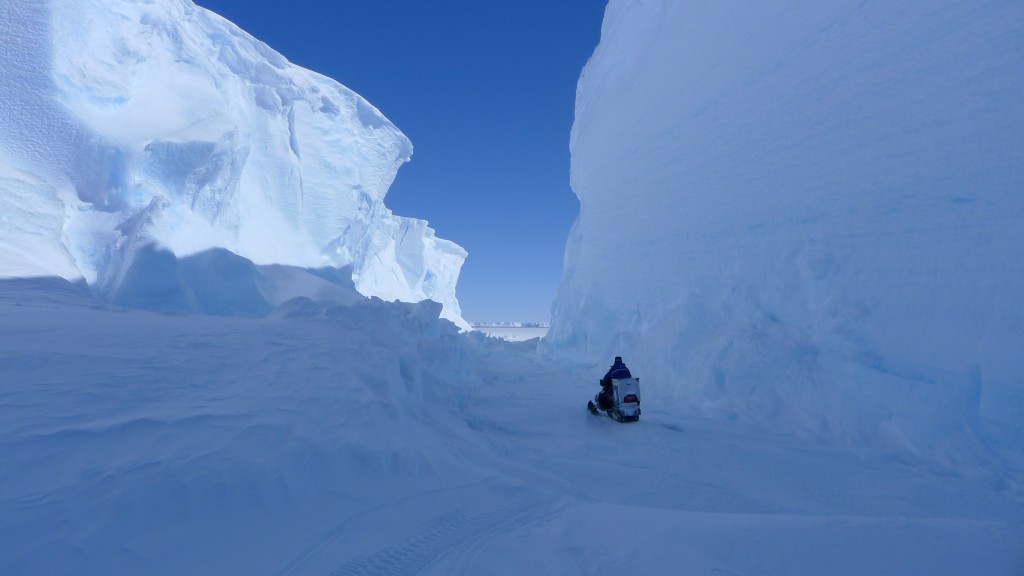
Warmer temperatures, more snow? Belgian International Polar Foundation shot of director and explorer Alain Hubert in the Antarctic.
A story from the opposite pole has also attracted attention. It says climate change is actually increasing the amount of snow in the Antarctic. Puzzling? Not necessarily.
More heat, more snow?
An international study headed by Germany’s Potsdam Institute for Climate Impact research (PIK) comes to the conclusion that every degree of regional warming could increase snowfall there by around five percent. The estimate is based on ice cores and climate modeling.
The information adds a new element to calculations of how much the Antarctic will contribute to global sea level rise. Some people might assume more snow would stop the Antarctic from losing mass. In fact the increasing weight of new snow and ice can make it slide towards the coast and into the ocean faster. In this connection, you might like to read some more stories on these Antarctic issues:
Thicker-ice-in-the-antarctic-good-news-for-the-climate?
Antarctic melt could raise sea levels faster
West Antarctic ice sheet collapse unstoppable
Anders Levermann, one of the new study authors, whom I have spoken to several times on the effects of climate change on the Antarctic and global sea levels, says the latest results back up earlier conclusions that the Antarctic will lose more ice than it will gain and thus have a major influence on global sea level. Levermann, from PIK, is also one of the lead authors of the sea-level chapter of the IPCC report. He stresses that the latest study just provides yet another piece of the “jigsaw puzzle” coming together on how global sea level is likely to develop in the future.
If the world leaders called on to come up with a new world climate agreement at the end of this year need any more motivation, this scientific research from both ends of the world should really give them an extra push.
Arctic oil – still in the picture
Was it too good to be true? The euphoria over the US administration’s moves to protect the Arctic National Wildlife Refuge was dampened somewhat when, just two days later, it released a long-term plan for opening coastal waters to oil and gas exploration, including areas in the Arctic off Alaska. The plan excludes some important ecological and subsistence areas from potential drilling, but it still includes some Arctic areas, including parts of the Beaufort and Chukchi Seas.
Margaret Williams, managing director of WWF US Arctic Programs, told Deutsche Welle, she welcomed in particular the decision to protect the biological hotspot of Hanna Shoal from risky offshore drilling. The Hanna Shoal is a key site for walruses and other animals.
But she stressed other areas of the US Arctic were still subject to oil exploration. The new program will not affect existing leases held by Shell in the Chukchi Sea. The company’s efforts have been the subject of controversy, not least since the grounding of the drill rig Kulluk.
Williams says the problem with the new proposal in general is that it “keeps drilling for oil in the US Arctic offshore in the picture”. With the US poised to take the helm of the Arctic Council, she called for protecting biodiversity to be a top priority for all Arctic nations.
Oil: valuable asset or liability?
It comes as no surprise that Alaskan state politicians and the oil industry promised to fight planned restrictions, saying they were harmful to the economy. But this brings us back to the question of whether the search for new oil in the Arctic makes any sense at all at a time when oil prices are at a record low and the USA is producing plentiful supplies of shale gas.
Bloomberg financial news group quotes financial experts as saying the world’s biggest oil producers do not have “bulletproof business models”, and cites financial cutbacks by BP, Chevrol and Shell:
“The price collapse hobbles a segment of the industry that had already been struggling with years of soaring construction costs, project delays, missed output targets and depressed returns from refining crude into fuels”, analyst Anish Kapadia told Bloomberg.
Climate paradox
Conservation groups stressed the need for a different focus, in the year when the USA has pledged to help create an effective new world climate agreement in Paris in November.
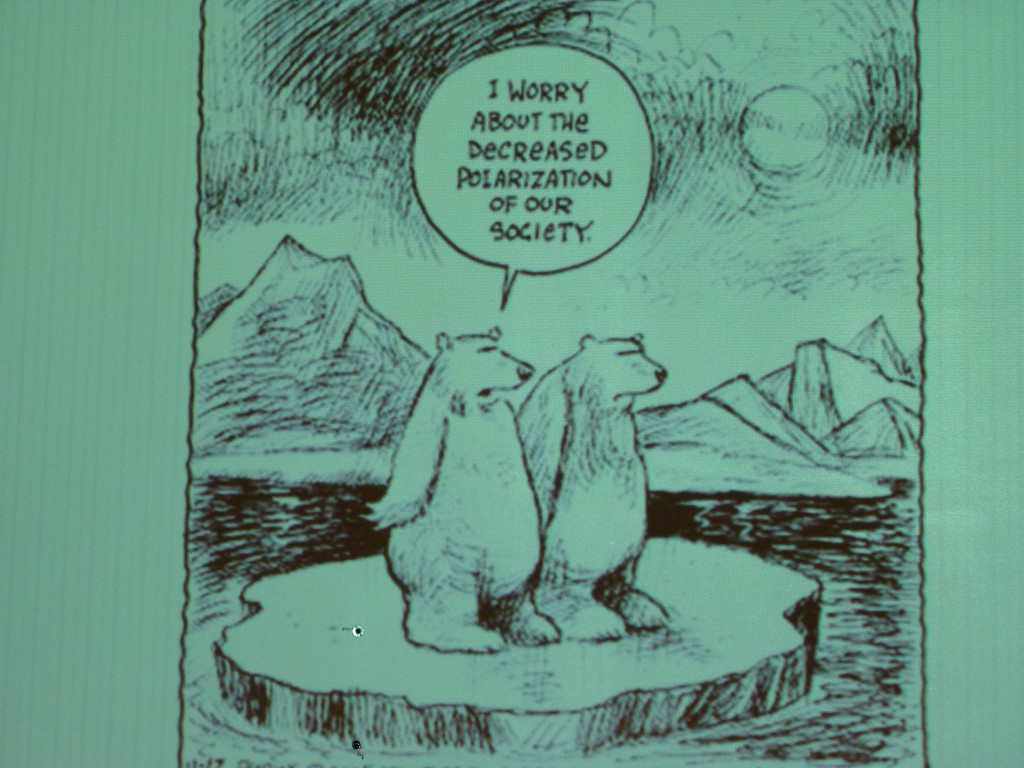
Cartoon by psychologist Per Espen Stoknes, BI Norwegian School of Management.( I photographed it at a workshop on climate change psyschology)
“Rather than opening more of the Arctic and other US coastal waters to drilling for dirty energy, the US needs to ramp-up its transition to a clean energy future. As the Administration works to rally international leaders behind a bold climate pact in 2015, decisions to tap new fossil fuel reserves off our own coasts sends mixed signals about US climate leadership abroad, ” said WWF’s Williams.
We know the Arctic is being hit at least twice as fast as the global average by climate change. The ecosystem is already under huge pressure. The Arctic itself is in turn of key importance to global weather patterns. And burning more oil would exacerbate the situation even further.
“We would like to think that we can shift our energy paradigm to clean energy so that we don’t have to take every last bit of oil out of the earth, especially out of the oceans”, said Jackie Savitz from the Oceana Campaign croup.
Studies by the group and by WWF indicate that developing renewable energy technologies such as offshore wind could create more jobs than hanging on to fossil fuel technologies.
Oil spill concern
In addition to the climate paradox of the hunt for new fossil fuels, environmentalists are concerned about the possible impact of an oil spill. Their opposition is not limited to the Arctic. Proposals to open up large areas of coastal waters including some parts of the Atlantic for the first time have also aroused anxiety about possible pollution. But the Arctic is of particular concern because of its remoteness, harsh weather conditions and seasonal ice cover, which is not likely to disappear soon even with rapid climate change:
“Encouraging further oil exploration in this harsh, unpredictable environment at a time when oil companies have no way of cleaning up spills threatens the health of our oceans and local communities they support. When the Deepwater Horizon spilled 210 million gallons of crude oil five years ago, local wildlife, communities and economies were decimated. We cannot allow that to happen in the Arctic or anywhere else,” said WWF expert Williams.
White House senior counsellor John Podesta justified the ban on oil exploration in the ANWR by saying “unfortunately accidents and spills can still happen, and the environmental impacts can sometimes be felt for many years”. The question is – why should this only be applicable in certain areas? Campaigners say it also applies to the other areas now designated by the administration as “OK” for exploration. For the Arctic in particular, limiting exploration to remote offshore areas does not protect the region against the risk of environmental disaster.
Tromso filmfest inspires US Arctic envoy
Tromso prides itself on being the “capital of the north”. As well as the Arctic Frontiers conference, which is happening this week, TIFF, the Tromso International Film Festival has been running here. There is an amazing amount of culture for a place which seems so far from the city life of Oslo, the Norwegian capital. With a huge variety of films showing around the town, including the Oscar possible “Birdman”, the town was buzzing at the weekend.
I was fascinated to find these kids in their snowsuits settled in the city centre, waiting for a showing of Disney’s Frozen. As it turns out, I wasn’t the only one. At Arctic Frontiers today, the US Special Representative (ex Admiral) Robert Papp, told the story of how he and the Chair of the US Arctic Research Commission, Fran Ulmer, had shared a taxi into town from the airport and come across that same little outdoor film show.
He talked about his granddaughters and their fascination for the Disney figures, and whether Disney couldn’t be a good way to educate American children about the Arctic. The story goes that he suggested this to a leading figure in the movie company. Why not replace films showing a fantasy vision of the Arctic by movies about the plight of polar bears, villages in danger of collapsing through coastal erosion and other such stories. The Disney rep was apparently very put out. “We have to project optimism and have happy endings”, he reportedly told the Admiral.
Papp says he still feels optimistic, as he presented the programme for the upcoming US Chairmanship of the Arctic Council, a programme he says is rightly described as “ambitious”. The theme is “One Arctic. Shared opportunities, challenges and responsibilities”. With the impacts of the dispute between the west and Ukraine on the agenda this afternoon, it sounds like a good approach to Arctic governance.



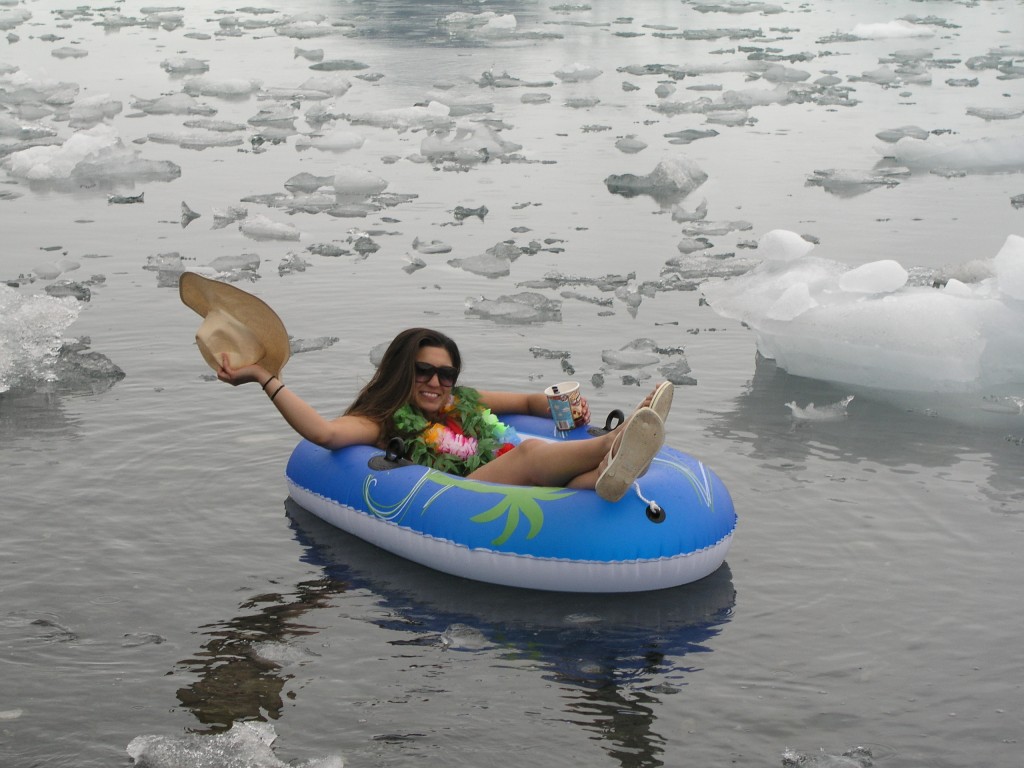
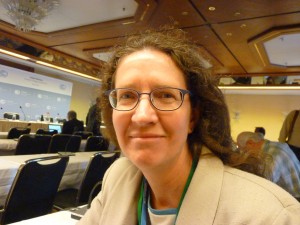

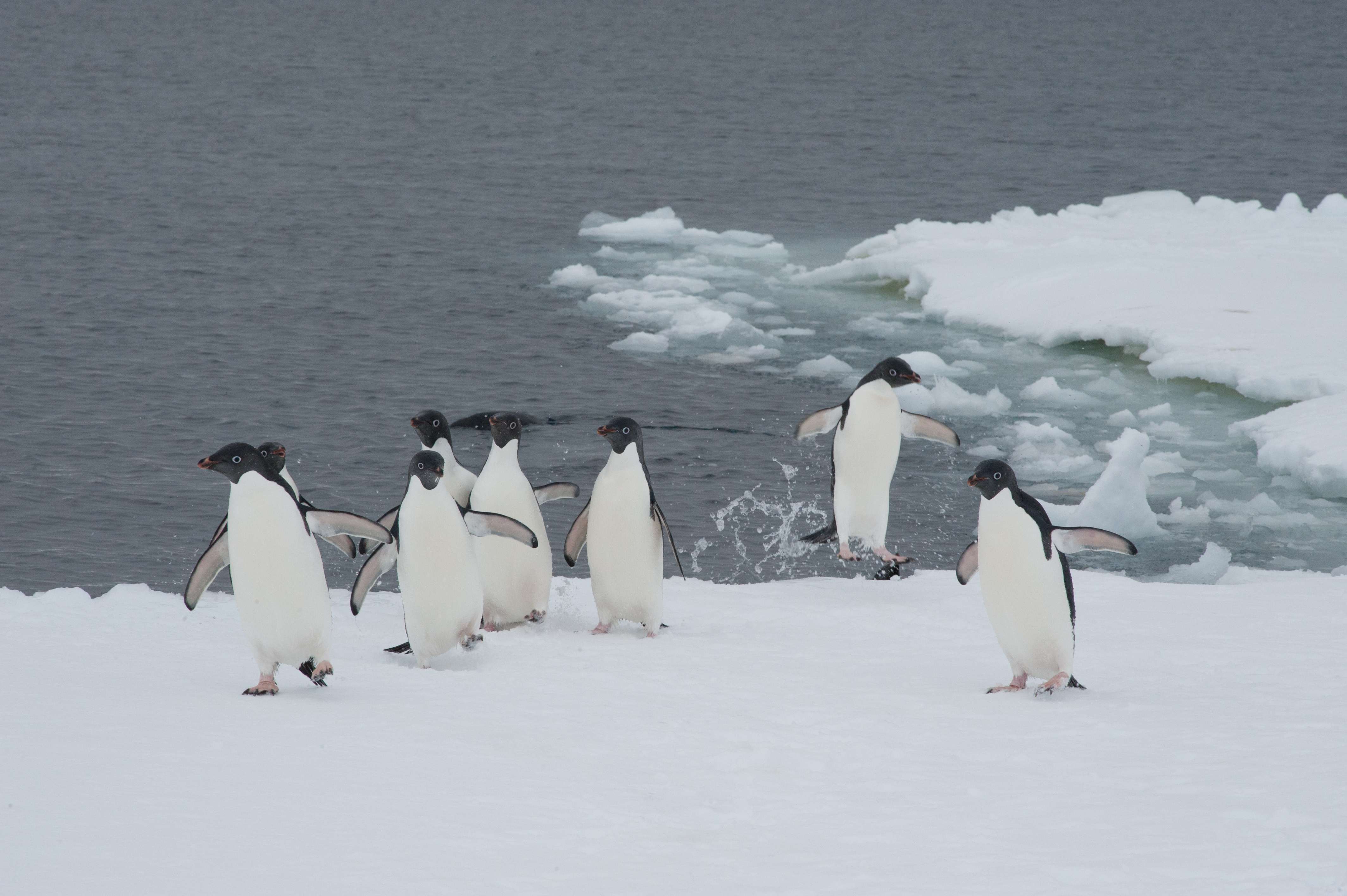


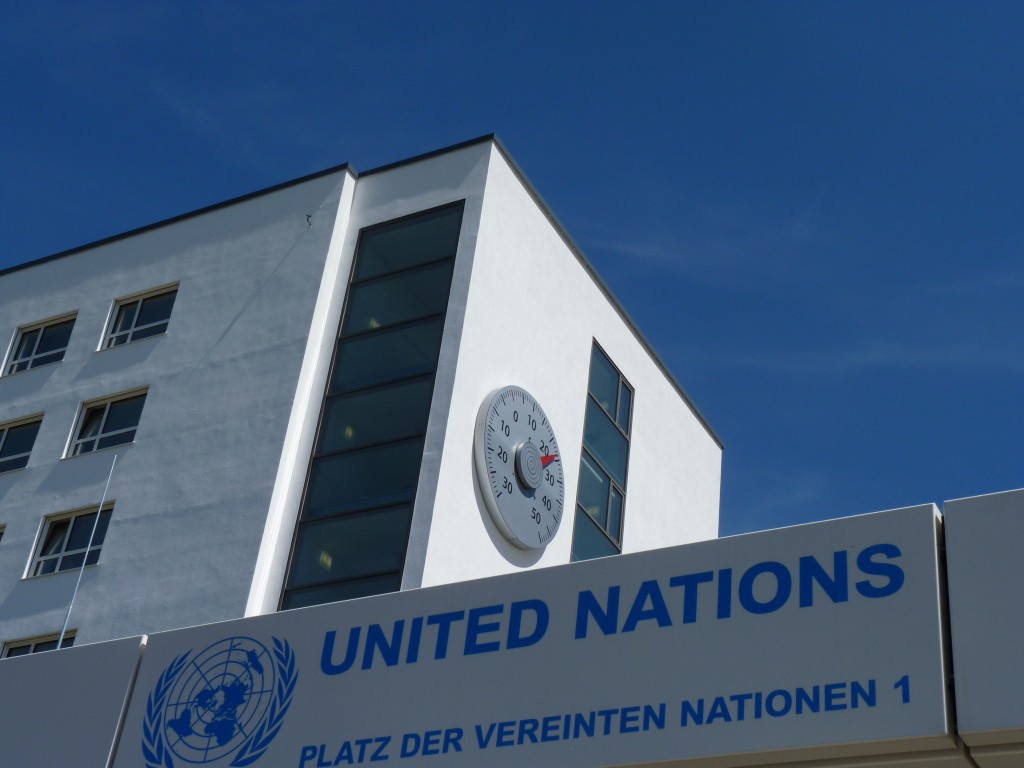
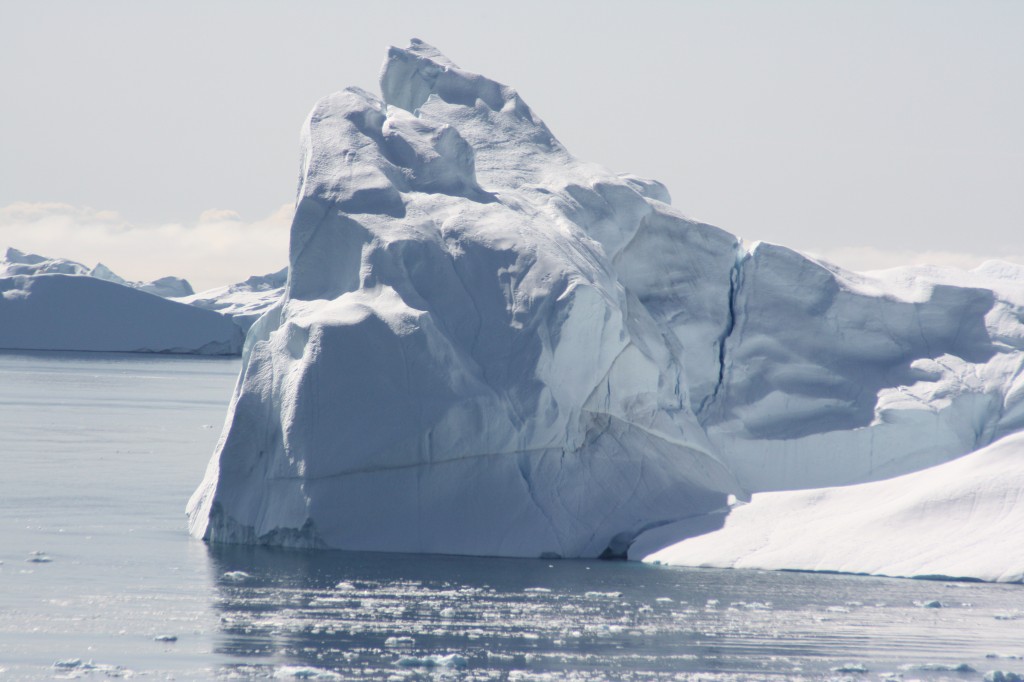
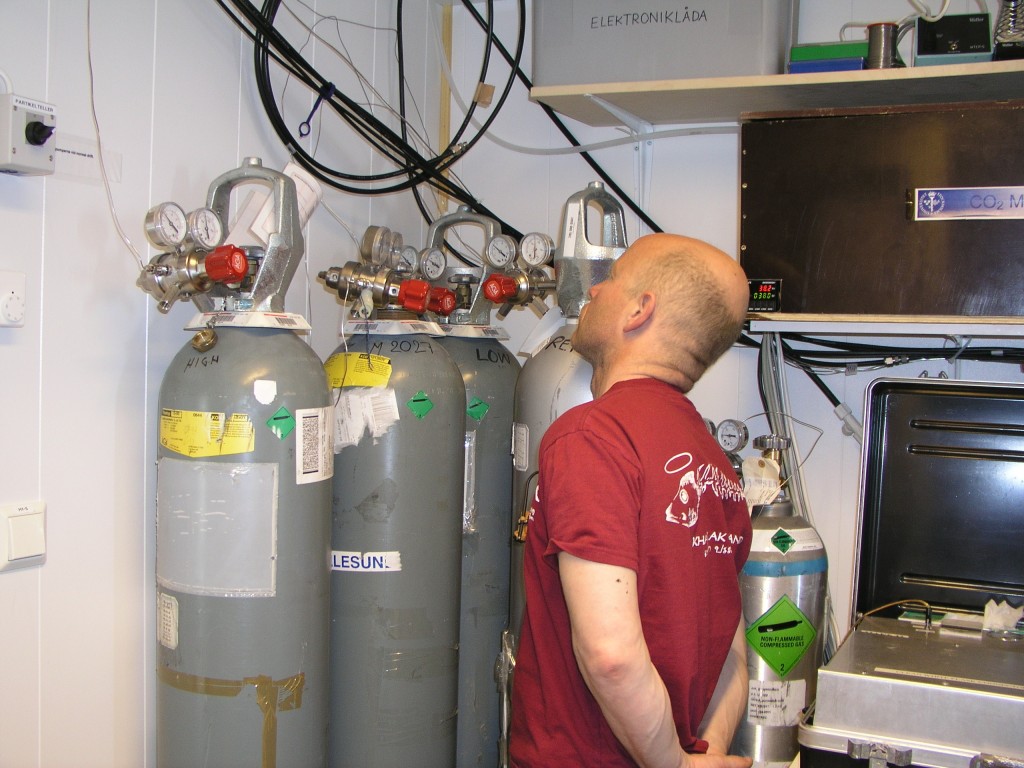
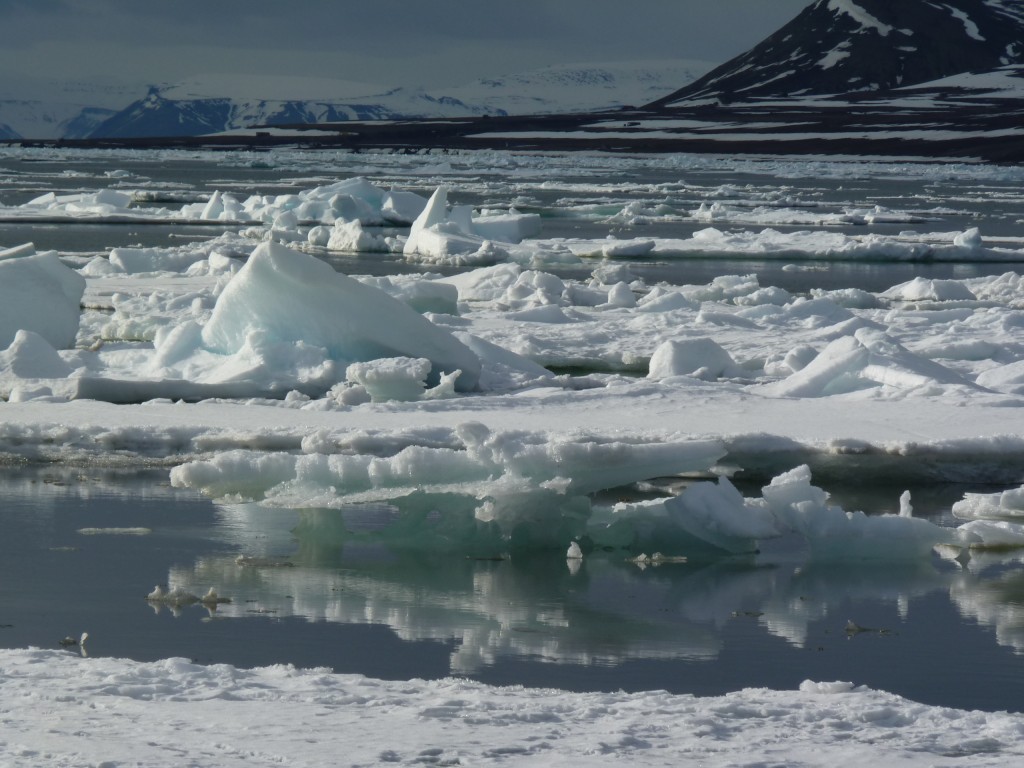
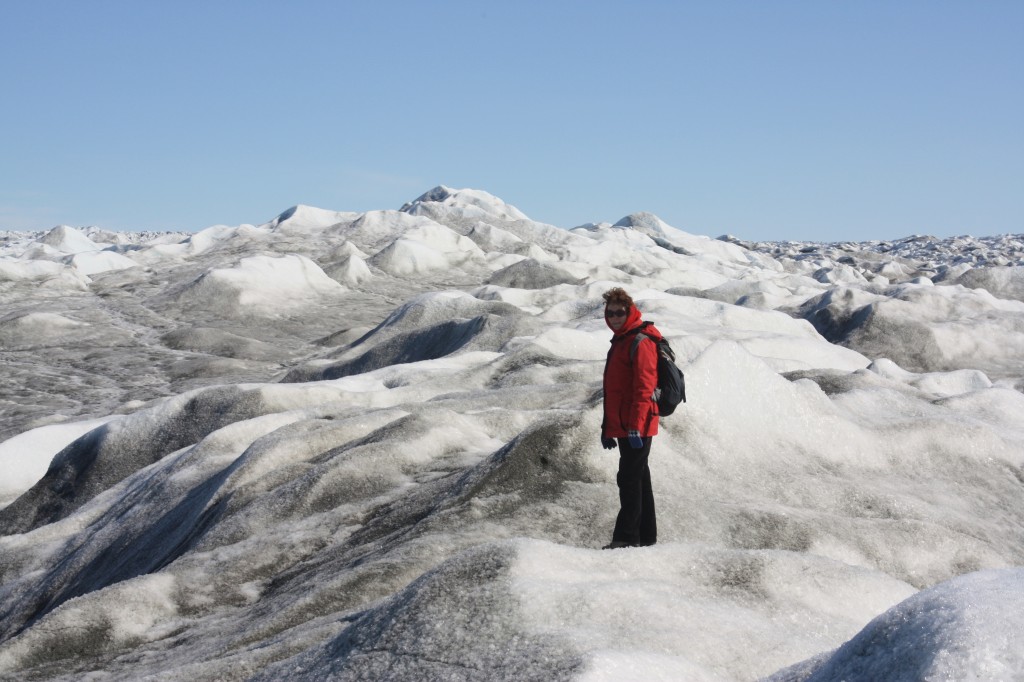





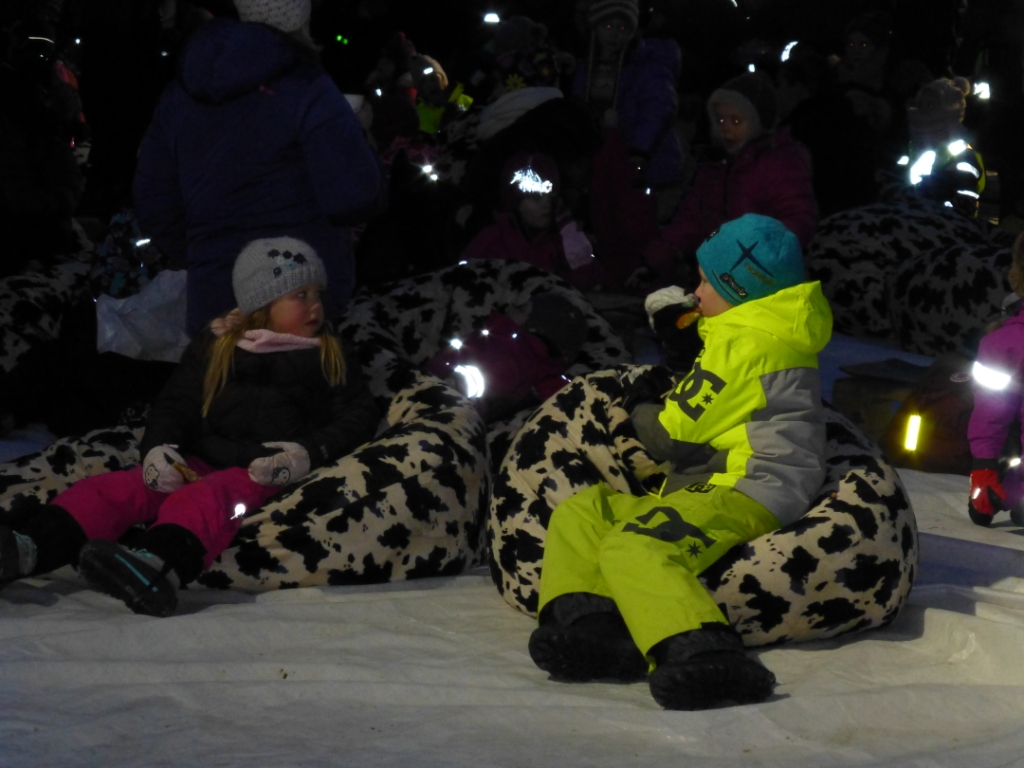
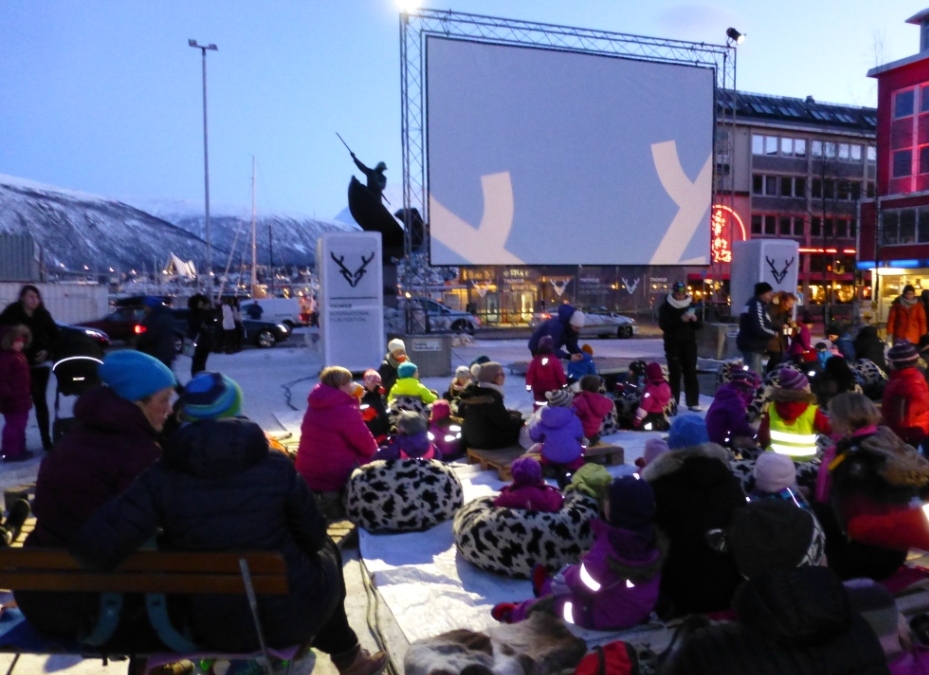

















Feedback